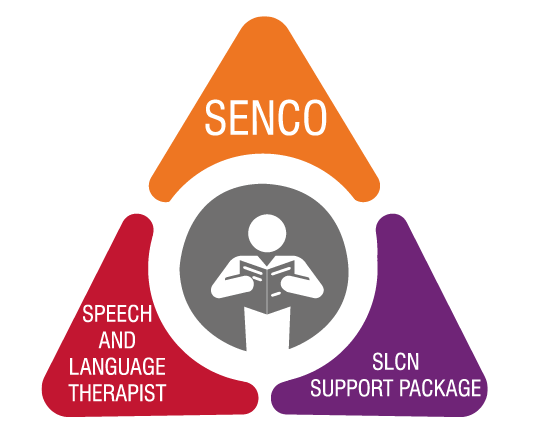Do you remember when speech and language therapists used to come into schools, take a child out for therapy and then take them back to class? Juliet Leonard, speech and language therapist discusses the important shifts that have occurred in supporting children and young people with SLCN and how the SENCo, the local speech and language therapy service and the school SLCN support package, can together create the most effective partnership.

The current climate: the speech and language therapist
The role of the speech and language therapist in schools has seen seismic shifts over the past twenty years. A growing population, an increase in awareness of SLCN and an understanding of the benefits of a collaborative approach have all shaped the changes that have occurred. Whilst the amount of time offered to individual schools by a speech and language therapist has generally seen a downward trend, the knowledge and skills of teaching staff in identifying SLCN and supporting children and young people continues to rise.
The COVID-19 pandemic has by far been the most disruptive recent event, having a long reaching impact on how speech and language therapists work in schools. Many therapists were redeployed to acute NHS services during the pandemic, appointments cancelled, and school closures meant that services could not run as normal. In the recent ‘Building Back Better: Speech and Language Therapy Service after Covid-19’ published by the Royal College of Speech and Language Therapists in March 2021, it was reported that 73% of the 0 –18 year-olds in the study had not received in-person speech and language therapy since the end of the first lockdown. This study also showed that 76% of children and young people reported that “speech and language therapy makes their life better”.
It is clear that speech and language therapists play a vital role in the lives of children and young people with SLCN. So how can their reach extend to all of the children who need it?
The SENCo
The school SENCo plays a pivotal role in the upskilling of school staff: the unsung hero, they are highly skilled at liaising with large numbers of visiting professionals, identifying and supporting training needs for staff and ensuring that the child and their family is at the centre of the discussion. In addition, they often take a key role in the school’s senior leadership, lead an army of teaching assistants and are a key point of contact for many parents and carers. As awareness of barriers to learning increases, so too has the SENCo’s diverse set of roles and responsibilities. They embrace a whole school approach and understand that to be truly inclusive, it is the environment that needs to progress and adapt as much as the individuals within it.
The support package
It is vitally important to identify children and young people with SLCN; we know the inextricable link between SLCN and educational outcomes and the importance of early identification and intervention. The support package is therefore the tool which can be used by the school to inform and understand the strengths and needs of their students, in liaison with the local speech and language therapy service, who can provide more in-depth assessment and support for the children who need it the most. The support package can be used universally for assessment and then offer targeted support to those children who need it.
The perfect combination
Ensuring a school community has the best access to speech and language support is not without its challenges: A lack of resource, time and a changing workforce are but a few. These factors can be frustrating and disheartening for those with a passion for supporting children with SLCN.
Marie Gascoigne, creator of The Balanced System® explains that a successful collaboration and support system for SLCN starts with a leadership and management team who value meaningful outcomes and support the workforce with training and development to upskill staff, working towards the common vision: a communication friendly school environment. Once this foundation is in place, interventions and support can be tailored according to the needs of the children in that school. The universal, targeted and specialist interventions being offered by the specialist workforce, alongside a wider workforce who know the children, can implement the best support, for the best outcomes. A commitment to developing this is an indicator that everybody is both willing and ready to pool their shared knowledge and resources.
Language Link identifies and supports children with mild to moderate SLCN. To find out more visit speechandlanguage.info
Please login to view this content
Login